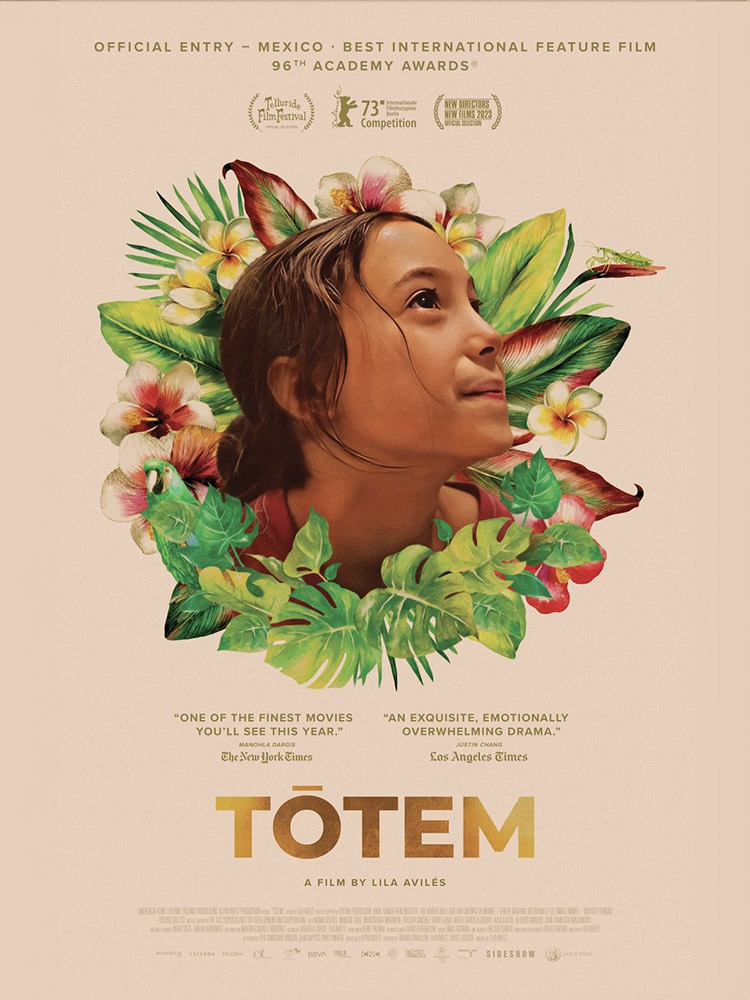02 Jun Totem [Mexico]
Released 2023
SUNDAY 18 AUGUST 2024 – 10.00 am
TUESDAY 20 AUGUST 2024 – 8.15 pm
RUNNING TIME 95 minutes
Synopsis:
Told largely through the eyes of a seven-year-old girl, this film is a minutely observed ensemble piece in which grief and celebration go hand in hand.
Review: Manohla Dargis
Set largely in a rambling house on a single momentous day, the film focuses on a serious-eyed girl, Sol. We see much of what she sees, the warmth and disorder. Yet because Sol is just 7, we also see what it means to be a child in that messy reality known as adulthood.
The Mexican writer-director Lila Avilés plunges into the mess the minute Sol (Naíma Sentíes), wearing a red clown nose and a floppy rainbow-colored wig, arrives at her grandfather’s house. There, amid the homey clutter of a house, two of her aunts are busily, and none too efficiently, prepping an evening birthday party for Sol’s gravely ill father, Tona (Mateo García Elizondo). As people and animals exit and enter the story — a raptor portentously flies overhead early on, part of a menagerie that includes bugs, dogs and a goldfish in a plastic bag — one aunt bakes a cake as the other dyes her hair.
Avilés soon maps the house’s labyrinthine sprawl, swiftly building a tangible sense of place with precise, well-worn details and quick-sketch character portraits. Totem is a coming into consciousness story about a child navigating realms — human and animal, spiritual and material — that exist around her like overlapping concentric circles. Yet even as the story’s focus sharpens, what matters here are the characters: their emotions and worried words, how they hold it together and fall apart, their individual habits and shared habitat.
As the girl wanders through the house, the camera is often at her side. In the kitchen, she watches an aunt (Montserrat Marañon) making the cake while keeping an eye on her young daughter. Sol continues her drifting as she peeps into rooms and listens in on adult conversations, a child explorer in a strange land. She can seem very alone.
It’s never fully clear how much Sol understands about her father’s condition, though in one scene her relatives argue about Tona’s treatment as she stands (unseen) quietly near them. The family’s troubles have their lightly comic moments, as when a psychic hired by one of the aunts enters ostensibly to cleanse the home. Later, some relatives assemble to focus on healing Tona with “quantum energy.” There’s gentle humour in these scattershot spiritual efforts, as well as desperation. Money for Tona’s medical treatment has run out, and so have the family’s options.
There is no score, only the playlist the characters hear. Yet Aviles finds music in the rhythms of the conversations, in particular the shorthand exchanges and in-jokes between family members who know each other so well. While relying on sub-titles may mean that some subtleties of Aviles screenplay may be missed, the film’s visual language is nevertheless, universal.
Source: www.newyorktimes.com Manohla Dargis 25/1/2024 Edited extracts ~ accessed 15/3/2024



